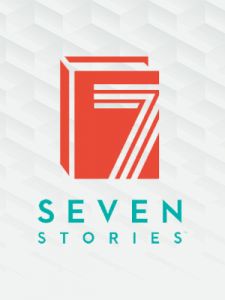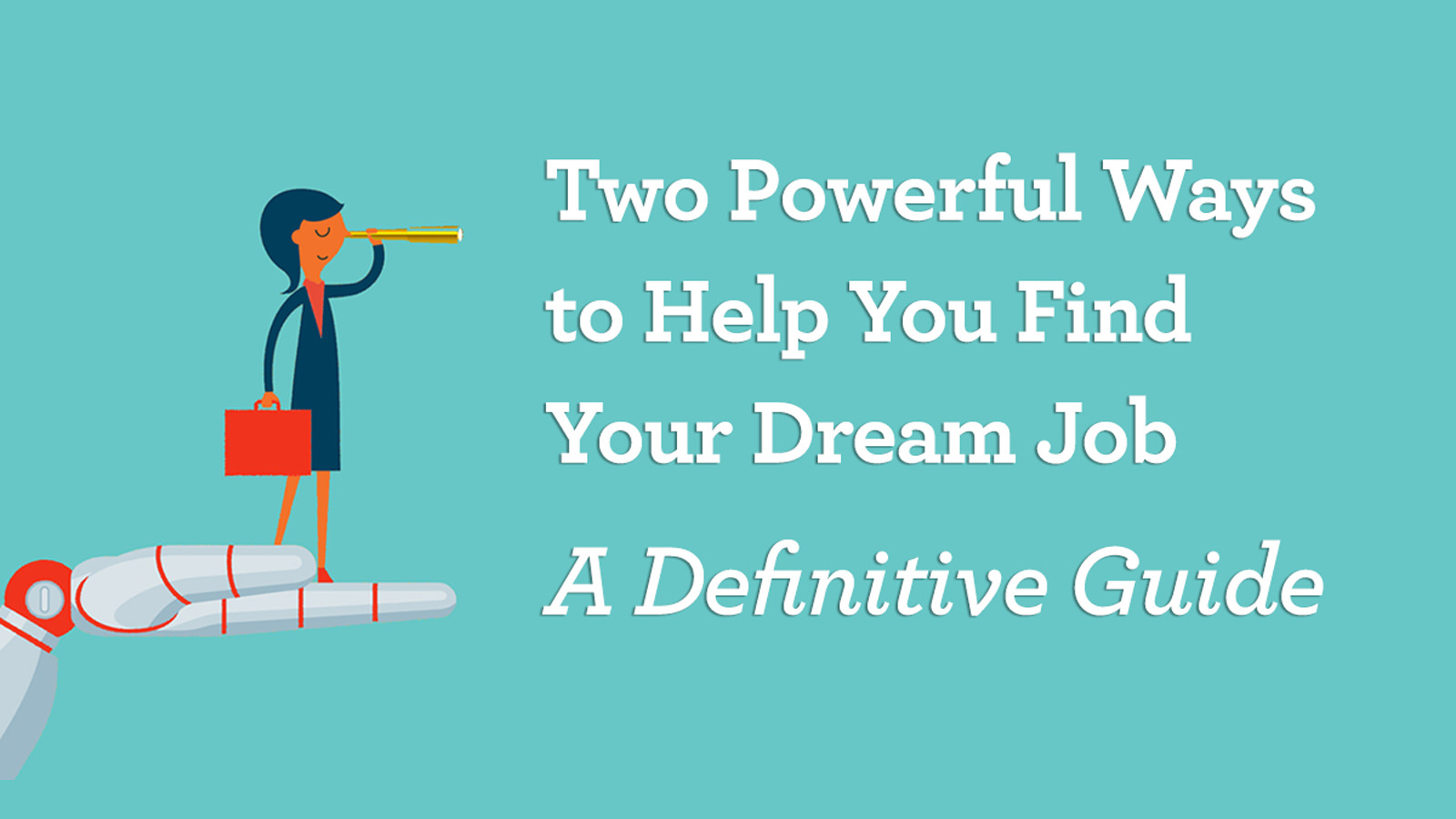Landing the job of your dreams means you need to have a dream to begin with. And if you don’t, you’re not alone.
Many people know they’re not happy in their jobs, but are not sure what would make them happy. They don’t know how to crack the code of their own career fulfillment.
That’s why a cornerstone of our 5-Step Method is assessment. Taking stock of your passions, your motivations, what makes you tick. It’s the most vital aspect of finding your dream job, but it’s the most commonly skipped step in a job search.
At GetFive, we believe that deciding what you want starts with understanding your accomplishments and the skills you enjoy using. Understanding those enjoyable skills and accomplishments will help you focus on them. Then, you can develop a career direction and find the job where you can use the skills you enjoy.
Assessments are helpful even if you don’t have that restless urge to change jobs. They provide insight into how you operate and how to improve the situation where you are currently working, an invaluable tool for both our personal and professional lives.
How do you begin? With two exercises we created to help you uncover your passions: the Seven Stories Exercise and the Forty-Year Vision. Let’s look at them both in depth.
The Seven Stories Exercise® and the Forty-Year Vision®
At GetFive, we created two exercises to help people find their passions, their purpose in life, and a pathway to career fulfillment: The Seven Stories Exercise® and the Forty-Year Vision®, both registered trademarks of GetFive.
These exercises will help you identify your dreams. These are not quick quizzes, folks. These tools are so powerful that some of the people most resistant to going through them in the first place have found themselves deciding to change careers once they were finished based on their self-realizations!
The Seven Stories Exercise
The insights provided by the Seven Stories Exercise will serve as the primary source for your accomplishment statements, which will in turn serve as a template for selecting the right job and even help you interview better.
To land that dream job, you first need a dream. Discovering that dream requires a deep dive into your purpose in life and your passions. There is no quick quiz to tell you the answer. Instead, by taking the time to go through the Seven Stories Exercise, you can learn what’s most important to you and discover a direction to your personal life as well as your career.
The History of the Seven Stories Approach
This technique for identifying your enjoyable accomplishments has its roots in the work of Bernard Haldane, who, in his job with the U.S. government in the 1940s, helped military personnel transition their skills to civilian life. Its overwhelming success won the attention of Harvard Business School where it went on to become a significant part of its Manual for Alumni Placement.
Haldane’s work is being carried on today all over the world through The Center for Dependable Strengths. They have brought Haldane’s method to places as diverse as South Africa and China, to colleges and universities, and in their work with young people. The Seven Stories approach was introduced to GetFive by George Hafner, who worked for Bernard Haldane.
Seven Stories 101
The exercise is designed to help uncover your true motivations. During this assessment, you will uncover your accomplishments and most enjoyable skills — patterns that run through our lives and ultimately become the elements for a satisfying job. Upon completion, you will have a better perspective on what these skills are. The assessment will also help you ace interviews and feel more confident in your career search.
Here’s how to do it, step by step.
Make a list of all the enjoyable accomplishments of your life, those things you enjoyed doing and also did well. List at least 25 enjoyable accomplishments from all parts of your life: work, from your youth, your school years, your early career up to the present. Reach back and dig deep. Don’t forget volunteer work, your hobbies, and your personal life. This doesn’t have to include only work-related things.
Don’t discount failures. Maybe the result of your efforts was not a roaring success. Maybe other people got credit for it, or maybe they under-appreciated it. For example, perhaps you were assigned to develop a new product and take it to market. Let’s say you worked on a project for two years, loved every minute of it, but it failed in the market. It doesn’t matter. What matters is that you enjoyed doing it and did it well.
Don’t include accomplishments you didn’t enjoy. If you slogged your way through a project that ultimately won a new contract, that’s great, but if you had to do it every day, would you be happy? Or say you got straight As in math in school. Wonderful, but did you love it, or were you just good at it?
Rank your accomplishments. When you have come up with 25 accomplishments, rank them in the order of how important they were in your life. The first seven on the list are your seven stories.
Write your seven stories. Starting with your first story, write a paragraph about each accomplishment. Describe what you did, how you did it, the skills you used, and why it made it to your list of seven lifetime accomplishments.
Look for patterns. When you have your seven stories in front of you, assess them. What do they have in common?
You will probably be surprised by what you find. For example, you may be especially good interacting with people, but it’s something you’ve always done and therefore take for granted. This may be a thread that runs through your life and may be one of your motivated skills. It may be that you’ll be unhappy in a career that doesn’t allow you to deal with people.
Tips for completing the Seven Stories exercise most effectively:
- Think about your entire life. What did you want to be when you grew up? Dig deep.
- Don’t expect to sit down and finish it in one go. This typically takes people several days to complete.
- Carry a notebook (digital or paper) to record ideas that come to you throughout the day.
- Ask friends to help. If you are having trouble doing the exercises, ask a friend to help you talk them through. Friends tend to be more objective and will probably point out strengths you never realized.
- Don’t discount efforts that failed or ones you didn’t get credit for completing. What matters is how enjoyable you found the task.
A Seven Stories case study
Here’s a snapshot of one client’s experience with Seven Stories, in his own words:
“When I did the Seven Stories Exercise, one of the first stories I listed was from when I was 10 years old, when I wrote a play to be put on by the kids in the neighborhood. I rehearsed everyone, sold tickets to the adults for two cents apiece, and served cookies and milk with the proceeds. You might say that my direction as a general manager — running the whole show, thinking things up, getting everybody working together — was set in the fourth grade. I saw these traits over and over again in each of my stories.
“After I saw those threads running through my life, it became easy for me to see the elements I must have in a career to be satisfied. When I would interview for a job or think of business ideas for myself (or when other people made suggestions), I would find out in short order whether the job or the business idea would address my motivated skills (running small groups, writing books, public speaking, and so on). If it didn’t, I wouldn’t be as happy as I could be, even though I may decide to take certain positions as an interim step toward a long-term goal. The fact is, people won’t do as well in the long run in positions that don’t satisfy their motivated skills.
“Sometimes I don’t pay attention to my own motivated skills, and I wind up doing things I regret. For example, in high school I scored the highest in the state in math. I was as surprised as everyone else, but I felt I finally had some direction in my life. I felt I had to use it to do something constructive. When I went to college, I majored in math. I almost flunked because I was bored with it. The fact is that I didn’t enjoy math, I was simply good at it.
“There are lots of things we’re good at, but they may not be the same things we really enjoy. The trick is to find those things we are good at, enjoy doing, and feel a sense of accomplishment from doing.
“To sum up: Discovering your motivated skills is the first step in career planning. I
was a general manager when I was 10, but I didn’t realize it. I’m a general manager now, and I love it. In between, I’ve done some things that have helped me toward my long-range goals,
and other things that have not helped at all.”

Analyzing your Seven Stories
When you’re analyzing the accomplishments you’ve chosen for your Seven Stories, it’s useful to have a Q&A session with yourself to dig a little deeper. Ask yourself: What gave me a sense of accomplishment? What about that made me proud?
Here’s an example of what that might look like:
Suzanne’s Story #1: “When I was 9 years old, there was a fire in our house and our cat had hidden upstairs. I ran back in and saved the cat.”
- What was the accomplishment? What made you proud?
- “I was proud because I did what I thought was right. I had a sense of accomplishment because I was able to make an instant decision under pressure.”
Suzanne’s Story #2: “Ten years ago, I was laid off from a large company where I had worked for nine years. I soon got a job as an administrative assistant on Wall Street. Six weeks later, a position opened up on the trading floor. I was one of three finalists, but they tried to discourage me from taking the job. I was determined to get that job and wanted to be given a chance. I went back for three interviews, demonstrated that I was the right person for the job, and eventually got it.”
- What was the accomplishment? What made you proud?
- “I fought to win. I was able to sell myself and overcome their objections. I was interviewed by three people at once. I amazed myself by saying, ‘I know I can do this job.’”
OK, what then? By analyzing multiple stories you can quickly name the patterns we see in both stories. What were Suzanne’s patterns?
Suzanne showed that she was good at making decisions in tense situations — both when saving the cat and when interviewing for that job. She showed a good intuitive sense and likes fast-paced, energetic situations.
After the full assessment, Suzanne realized she wanted these qualities in her job. Armed with this information, Suzanne can confidently say in an interview that she thrives on excitement, high pressure, and quick decision-making and get the job that utilizes these enjoyable skills.
The next step is selecting a few career possibilities that might satisfy you. Talk to people in those fields to find out if a particular field or industry is really what you want, and the possibilities for someone with your experience. That’s one way to test if your aspirations are realistic.
The big takeaway
The Seven Stories Exercise will provide you with information for your career direction, your résumé, and your interviews. When you uncover your enjoyable skills, you’ll be better able to identify jobs that allow you to use them, and recognize other jobs that don’t quite fit. Enjoyable skills are patterns that run through our lives. Since they are skills from which we get satisfaction, we’ll find ways to do them even if we don’t get to do them at work. We still might not know what these skills are — for us, they’re just something we do, and we take them for granted.
Pay attention to those stories that were most important to you. If none of your enjoyable accomplishments were work related, it may take great courage to eventually move into a field where you will be happier. Or you may decide to continue to have your enjoyment outside of work.
It is important to realize that the Seven Stories Exercise will not tell you exactly which career you should have, but the elements to look for in a career that you will find satisfying. You’ll have a range to consider, and you’ll know the elements you must have to keep you happy. This is what we call discovering your motivated skills, which is the first step in career planning.
The Forty-Year Vision®
If you could imagine your ideal life five years from now, what would it be like? How would it be different from the way it is now? How about five, 10, or 15 years from now?
You may find the idea of looking 40 or even 15 years ahead odd, but as a job hunter, you need to think beyond your immediate job search, and the Forty-Year Vision or even a Fifteen-Year Vision shows you how. Choose whichever time frame you want, but be sure you put yourself in the driver’s seat of your future by looking and planning beyond landing your next job.
Some people feel locked in by their present circumstances. Many say it is too late for them to change. However, a lot can happen in five, 10, 15 or 40 years — and most of what happens is up to you.
Some people pick what seems like the “sensible” route or the one that fits in with how others see them, rather than the one that is best for them. When a person finds a vision that is right for them, the most common reaction is fear. It is often safer to wish a better life than to actually make it happen. You are in the driver’s seat, so the choice is yours.
Review your vision and see if that path seems right for you. The Forty-Year Vision exercise will help put your future into perspective. When you are aware of your current situation, and you also know where you want to go, a natural tension between what you face today and what you’re trying to create will lead you forward faster.

Developing your vision
Fill out the Forty-Year Vision® worksheet, in the present tense (the way your life is right now, and the way you see yourself at each of the time frames listed). Start the exercise with the way things are now so you will be realistic about your future.
Questions on the worksheet include:
- What is your life like right now?
- Who are your friends? What do they do for a living?
- What is your relationship with your family?
- Are you married? Single? Do you have children?
- Where are you living? What does it look like?
- What are your hobbies and interests?
- What do you do for exercise?
- How is your health?
- How do you take care of your spiritual needs?
- What kind of work are you doing? What is your role?
- What kind of people do you work with?
- What is the atmosphere at work like (relaxed or frantic)?
Now that you have your answers to these questions in the present, relax and have a good time going through the years. How do you want your life to be in five years? Ten? Fifteen? Go as far into the future as you’d like.
When you have finished the exercise, ask yourself how you feel about your entire life going forward as you laid it out in your vision. If you don’t like your vision, change it until it reflects what you want. The Forty-Year Vision® is meant to be fun. Let your mind go and imagine all the possibilities you can create.
Conclusion
In the end, The Seven Stories Exercise and the Forty-Year Vision are both meant to be fun and self-reflective tools to help you see the forest despite the trees. They allow you to realize truths about yourself that you haven’t recognized before.
At GetFive, we are committed to helping people find their passions, their purpose in life, and a pathway to career fulfillment.
These exercises will help you identify your dreams.









